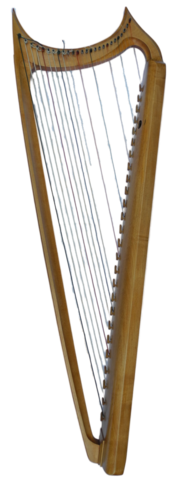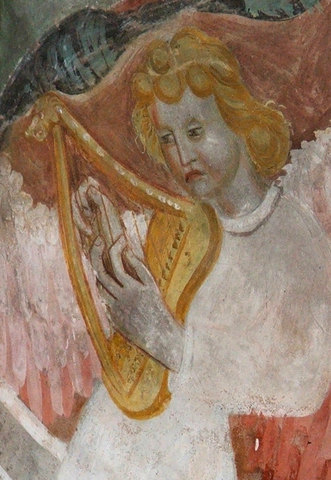Harp

By the 15th century, the so-called “Gothic” harp had emerged from earlier harp forms. Although it features the typically Gothic aesthetics of a slim and rising form, it should by rights be called “Renaissance” harp, since it only appears in the 15th century and can be found virtually unchanged until the late 16th century. Its number of strings – and thus its range – was significantly increased compared to the harp forms of the 13th century. It remained a genuinely diatonic instrument, but was also used for polyphony (both soloistic and in an ensemble), raising the question of “musica ficta”, or the use of certain chromatic alterations. Possibly the steps b-fa and b-mi, which were considered diatonic, were placed next to each other in the scale. Presumably, depending on the mode used, required accidentals were tuned in. Locally occurring musica ficta could have been skilfully circumvented, picked up by certain techniques or simply ignored as part of the harp idiom. Although multi-row harps already existed, the standard remained the single-row diatonic harp.
A special feature of the late medieval and Renaissance harp of central Europe were the “bray pins”, which were set at the lower end of the strings in such a way that the strings vibrated against them when they were plucked, producing a buzzing sound. This sound became so strongly associated with the harp instrument that the term “harpffen” (“harping”) was used as a synonym for “buzzing”, for example by Sebastian Virdung in his “Musica getutscht” of 1511 and in the lute book of Vincenzo Capirola (1517). In French, the bray pins are called “harpions” and as late as the beginning of the 17th century, Michael Praetorius and Johann Haiden senior speak of “harffenirender Resonanz” (“harping resonance”) and of “harpffen und schnarren der Seitten” (“harping and buzzing of strings”).
(Recording taken with kind permission from the CD “De arte saltandi – Die Tänze des Domenico da Piacenza (ca. 1450)”, Terem-Music 2015. The sources contain only Domenico’s dance description without melody. The musical setting was newly arranged by Sergei Yemelyanenkov along the choreography and using surviving dance melodies as a model).

